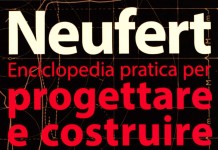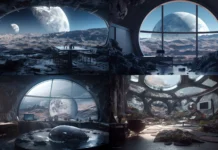The advent of advanced AI for architecture has accelerated the rate of change in building design. These AI tools are changing the planning, manufacturing and construction processes of the architectural industry. Using these resources, architects can increase efficiency, develop projects faster, and save time and resources for other questions such as cost analysis and green building initiatives.
What are the best AI tools for architecture?
Currently, architects work both alone and in teams to complete the design process, which can take months or even years. Designing and equipping a development building can take a long time, sometimes years. Some of the more tedious steps can be automated, but overall the process still requires a lot of manual work and an investment of time.
Thanks to AI’s potential to automate previously human tasks, it can be used to reduce work, increase effectiveness, improve design, and pave the way for new forms of architectural innovation. Here is a list of 30 architecture AI tools that could make the architecture industry more compelling and fascinating.
Catalog of AI Tools for Architecture, Design, and Images
1. Architecture
Spacemaker
Utility: Optimizes urban design by simulating various scenarios to improve efficiency and sustainability. AI is used to rapidly generate and analyze different design configurations, allowing architects to explore optimal solutions based on specific site parameters and regulations.
TestFit
Utility: Quickly generates design configurations for sites, enhancing planning and space optimization. It uses AI algorithms to automatically evaluate and produce layouts that maximize space usage and project needs.
Archistar
Utility: Provides data and tools to optimize urban design, analyzing regulations and aerial perspectives. AI helps visualize and simulate regulatory and environmental impacts, facilitating decisions based on advanced analysis.
Hypar
Utility: Automates the generation of architectural and infrastructure designs, reducing design time. AI is employed to create models and design solutions based on project inputs, improving efficiency through automation.
Cove.Tool
Utility: Analyzes building performance and optimizes design for sustainability and energy efficiency. AI processes and integrates environmental and design data, facilitating the creation of precise and optimized energy models.
RoomGPT
Utility: Generates interior design ideas based on room images, allowing users to visualize and modify spaces quickly. AI is used to suggest and implement interior design changes, adapting images to the user’s preferences and needs.
2. Interior Design
Interior AI
Utility: Creates personalized interior designs and layout suggestions based on user-provided images. AI analyzes photos of spaces and applies specific styles and themes, rapidly creating new arrangements and environments.
Havenly
Utility: Helps with furniture and decoration choices, supported by interior designers and 3D imaging technology. AI assists in visualizing personalized design suggestions based on user preferences and furniture styles.
Hutch
Utility: Suggests and visualizes decor changes, helping design interior spaces with realistic simulations. AI is used to generate virtual renderings that show how furniture and changes affect the look of spaces.
TextureLab
Utility: Creates realistic 3D textures to enhance visualization and interior design. AI generates and applies complex 3D textures and effects, improving the aesthetics of interior design projects.
Lumalab
Utility: Generates 3D scenes from photos, adding details and camera movements for immersive visualization. AI recreates detailed 3D environments from photographic images, facilitating realistic and engaging visual experiences.
3. Image Generation and Manipulation
Midjourney
Utility: Transforms text descriptions into artistic and photorealistic images. AI interprets text and generates visuals that reflect the descriptions provided, producing stunning and creative results.
DALL-E
Utility: Generates images from text, exploring creative and artistic possibilities. AI models are used to understand and visualize descriptive concepts, producing original images based on textual input.
Runway
Utility: A suite of AI tools for generating and editing images, supporting various models for visual content creation. AI is employed to apply effects, generate images, and support creative workflows with advanced tools.
DeepArt.io
Utility: Transforms photos into artworks with unique artistic styles. AI applies artistic techniques to photos, creating images that reflect particular visual styles.
Artbreeder
Utility: Combines and modifies images and styles, creating new artworks through a generative interface. AI enables the manipulation and evolution of images, facilitating the creation of innovative visual results.
Playform.io
Utility: Manipulates and generates artistic and creative images. AI explores and creates new artistic possibilities through generative models.
NightCafe Studio
Utility: Converts text descriptions into visual artworks, offering various artistic techniques and styles. AI helps generate art based on text input, applying various artistic styles.
VQGAN+CLIP
Utility: Uses VQGAN and CLIP AI models to generate text-based art. Combines computer vision and image generation to produce creative and unique artworks.
4. Urban Planning and Design
Sidewalk Labs
Utility: Analyzes and optimizes urban planning, improving sustainability and efficiency. AI simulates and models urban scenarios, supporting the creation of smarter and more livable cities.
UrbanFootprint
Utility: Analyzes urban data and supports planning with simulations and predictive models. AI processes and visualizes complex data, optimizing urban and territorial planning.
CityFormLab
Utility: Provides tools for urban and territorial design, helping with simulation and optimization of plans. AI is used to analyze and visualize the implications of urban and territorial plans.
Gibson
Utility: Manages and plans territorial data, supporting urban development with advanced insights. AI analyzes and optimizes geographic and planning data.
Geosmart
Utility: Analyzes and optimizes geographic data to support territorial and urban planning decisions. AI improves accuracy and efficiency in planning and land management.
5. Structural Calculation and Engineering
DeepCivils
Utility: Analyzes and designs civil structures, providing forecasts and simulations based on historical and current data. AI optimizes structural calculations and predicts performance.
UFO (Universal Form Optimization)
Utility: Optimizes structural designs, improving efficiency and reducing costs through simulations and predictive models. AI analyzes and optimizes complex structural forms.
Skyline AI
Utility: Designs and analyzes structures and buildings, improving the precision and efficiency of structural calculations. AI simulates and optimizes structural performance.
Raptor
Utility: Analyzes and simulates structures, providing predictive solutions for civil engineering. AI performs advanced simulations and optimizes structural design.
BIM 360
Utility: Collaborates in the management of construction and engineering projects, optimizing workflow and design quality. AI improves data management and coordination between project teams.
6. Space and Structural Modeling
Neural Design Studio
Utility: Designs and models complex structures with support for the generation of spatial models and advanced architectural structures. AI creates and optimizes detailed and complex 3D models.
ShapeNet
Utility: Creates and analyzes 3D models, providing a database of shapes and structures for design and simulation. AI classifies and generates 3D models, facilitating design and analysis.
SculptGL
Utility: Models and modifies complex 3D structures with precision and detail. AI supports the sculpting and modification of complex 3D models, improving interaction and precision.
VoxelBuilders
Utility: Creates voxel-based structures for designing complex and detailed 3D models. AI generates and manipulates voxel-based structures, facilitating three-dimensional design.
ModelAI
Utility: Generates and optimizes structural and spatial models, facilitating the creation of complex architectural designs. AI enhances the design and analysis of advanced 3D models.
Conclusions
AI tools can offer multiple benefits within architecture, from design to construction and maintenance of buildings.
Here are the reasons why you might consider using them:
- Automatic layout generation: AI tools can assist in the automatic creation of architectural layouts, providing initial design ideas and options.
- Energy Efficiency Analysis: AI can be used to analyze the energy performance of architectural designs and make suggestions for efficiency improvements.
- Airflow Simulation: AI models can simulate the airflow inside a building, allowing you to optimize space distribution and improve natural ventilation.
- Natural light modeling: AI tools can simulate natural lighting in an architectural environment, allowing you to design well-lit spaces and optimize energy efficiency.
- Image Recognition: AI can help automatically identify and categorize architectural elements based on reference images or photographs.
- Speech Recognition: AI-powered speech recognition systems can streamline interaction with building information modeling (BIM) models or architectural design software.
- Generative Design: Generative design tools use AI to automatically generate multiple architectural design options based on specific criteria, providing a wide range of solutions to explore.
- Urban data analysis: AI can analyze large amounts of urban data, such as traffic, population density or land use, to guide urban design decisions.
- Material Detection: AI models can be trained to recognize and identify the materials used in a building or architectural environment.
- Structural Analysis: AI can be used for structural analysis of a building, allowing you to evaluate the strength and safety of structures.
- 3D modeling and rendering: AI tools can automate the process of 3D modeling and rendering, reducing the time it takes to create realistic visualizations of architectural designs.
- Acoustic analysis: AI can simulate and analyze the acoustics of architectural spaces, providing information on sound quality and aiding in the design of acoustically comfortable environments.
- Route optimization: AI can be used to optimize routes within buildings or architectural complexes, improving distribution and managing interference.
Se hai problemi per affrontare i punti suindicati, e vuoi ottimizzare i tempi, potresti valutare la possibilità di frequentare un corso per la preparazione dell'esame di stato di architetto o singole lezioni su ogni argomento legato alla professione di Architetto / Pianificatore Territoriale e/o alla prova d’esame.
________________________________________________________________________ _________________________________________________________________________Pubblicazione gratuita di libera circolazione. Gli Autori non sono soggetti a compensi per le loro opere. Se per errore qualche testo o immagine fosse pubblicato in via inappropriata chiediamo agli Autori di segnalarci il fatto è provvederemo alla sua cancellazione dal sito










